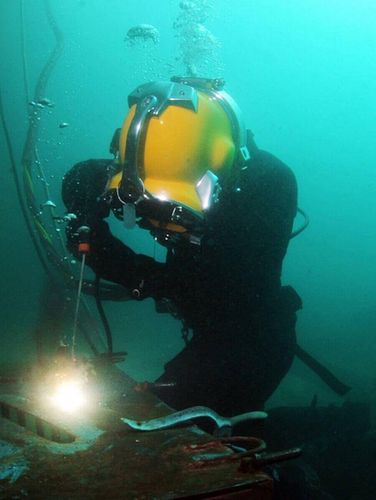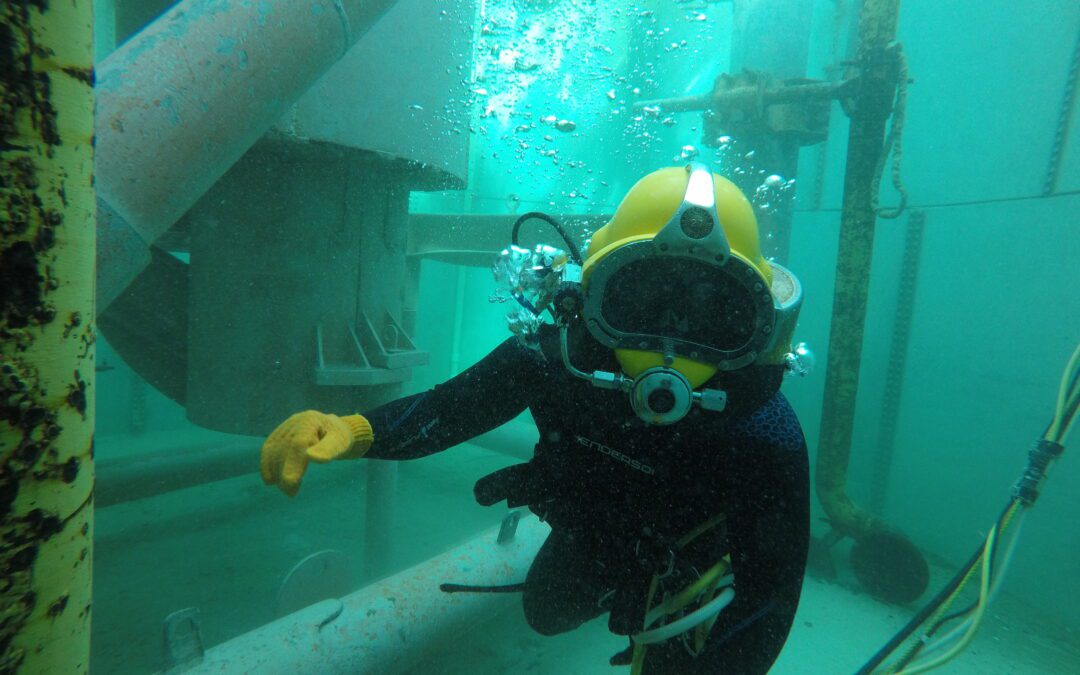What is Underwater Welding? Techniques, Challenges, and Applications
Underwater welding is a challenging and exciting profession that involves welding in subsea environments; additionally, it requires specialized training, equipment, and techniques to ensure successful results. This article will explore the world of underwater welding, the methods involved, the challenges welders face, and the various applications of this unique profession.

What is Underwater Welding?
It is the process of welding in a submerged environment, typically in the ocean or freshwater bodies. The process involves using welding equipment and techniques that are specifically designed for underwater use. For this reason, the welder must have the proper training, certification, and experience to perform this type of work safely and efficiently.
Techniques
There are two primary techniques used in underwater welding: wet welding and dry welding. Wet welding involves welding in the water itself, with the welder submerged in the environment. On the other hand, dry welding involves welding in a chamber pressurized with gas, allowing the welder to work in a dry, controlled environment.
Wet welding is typically used for quick repairs and smaller projects, while dry welding is used for larger, more complex projects that require precise and controlled conditions.
Challenges
This profession presents a unique set of challenges that the welder must address. These challenges include working in low visibility conditions, dealing with water currents, and ensuring the safety of both the welder and any nearby aquatic life.
The welder must also know the risks of welding in a submerged environment, such as electrical shock and decompression sickness. Subsequently, proper training, like that The Ocean Corporation provides, and equipment is essential to ensure the welder’s safety.
Applications
Underwater welding is used in various applications across multiple industries, such as:
- Offshore Oil and Gas Industry: Underwater welding is essential for the construction, maintenance, and repair of offshore oil and gas platforms. These structures are located in harsh marine environments, where saltwater corrosion and physical damage from waves and currents can compromise their structural integrity. Welders use specialized equipment to repair and replace damaged or corroded parts, preventing leaks and other safety hazards.
- Shipbuilding and Repair: Ships are often subjected to harsh marine environments, which can result in damage to their hulls, propellers, and other components. Underwater welders play a crucial role in repairing these components, keeping the vessels seaworthy, and ensuring their safety.
- Bridge and Dam Maintenance: Many bridges and dams have underwater components that require regular maintenance and repair. Underwater welders use specialized equipment to perform maintenance and repair tasks, such as replacing corroded bolts and repairing structural components.
- Salvage and Demolition: When ships, submarines, and other vessels sink or become damaged beyond repair, underwater welders may be called upon to salvage or dismantle them. This can involve cutting and welding large pieces of metal in challenging underwater conditions.
- Underwater Construction: Underwater welding is also used in the construction of new underwater structures, such as pipelines, docks, and artificial reefs. Welders use specialized equipment to weld sections of metal pipes together, create new underwater structures, and ensure their safety and stability.
Conclusion
Underwater welding is a challenging and rewarding profession that requires specialized training, experience, and equipment. The techniques involved, the challenges faced, and the applications of this profession are diverse and unique. If you want to pursue a career in underwater welding, request more information about The Ocean Corporation’s courses, sign-up for classes, or call us at 800-321-0298.


Recent Comments